SUMMARY
This is AI generated summarization, which may have errors. For context, always refer to the full article.

Philippine cinema has always been enriched by the creation and consumption of alternative cinema. From Kidlat Tahimik’s Perfumed Nightmare (1977) to Raymond Red’s Anino (2000) to Jet Layco’s For My Alien Friend (2019), alternative cinema has, at its best, challenged the dominant conventions of mainstream stories and storytelling inherited from Hollywood: expanding not only filmmakers’ sets of tools, but also audiences’ perceptions of what films can and should be.
Gawad Alternatibo (or Gawad CCP Para sa Alternatibong Pelikula at Video) has served as fertile ground for these experiments to be conducted and shared with the Philippine population.
But even with free month-long online screenings of 86 diverse cinematic experiences, Gawad Alternatibo hasn’t developed the same fervent audience and loyal viewership as its younger sibling Cinemalaya, nor the same attention from mainstream outlets and independent critics.
While it’s difficult to watch and write about all of the films, it is not an impossible feat, as proven by some of my friends and fellow critics.
In an attempt to encourage audiences to give alternative cinema a chance, I’ve chosen to write about some personal highlights from five of the six sections: animated, experimental, documentary, short feature, and exhibition.
ANIMATED SECTION
Flush by Roland Cartagena
Money is essential to negotiating your place in the world. Food, water, shelter, travel, and even cultural capital like films, TV, and music are only accessible if you have resources. In the process of seeking ways to participate, we often exchange our rights and liberties for currency and opportunity.
The landscape often benefits only the privileged few while exploiting and displacing the working class, providing a clear delineation between those above and below. As it continues to reduce human beings to their economic function, cinema will continue to reflect and critique this reality as a form of questioning the status quo.
What sets Flush apart from many filmic examinations and critiques of these same issues is its creative simplicity. It is easy to imagine the film as a live-action drama: a worker who is exploited by a greedy, unjust boss, is laid off and eventually leads a revolution against the enterprise. Yet it is successful because of its sparseness: relying on its digital hand-drawn animation to convey small resistances and what little of a score and sound design to signal its triumph, which only speaks to the talent and resourcefulness of its creator Roland Cartagena. So when the film’s Marxist conclusion culminates in all its disturbingly violent glory, there is still humor injected into the scene and a hope for a future where we are not treated like shit.
Ma, by Dexter Paul de Jesus
When lockdowns started happening in March, the first thing I saw from Film Twitter was the disdain for cinema that tackled the pandemic. People do not like being reminded of the misery they’ve witnessed, the grief they’ve experienced, or the hopelessness that haunts us every moment in our lives. Cinema was used to escape.
But now, the fact is that the pandemic may not likely be going anywhere and cinema will always respond to the times. It’s very easy to sensationalize stories born from such turmoil, but nonetheless there is value in the telling: it speaks volumes and has weight because it matters. To dismiss “pandemic cinema” altogether would be to live in delusion.
The absence of most gatherings have reminded us that food is a center for Filipino culture. More than simply enjoying a dish, it is the sharing that enables Filipino families to connect and communicate with one another and Ma, encapsulates this longing for a shared meal. Using what seems to be ink-drawn animation, Dexter Paul de Jesus fills up the void left by the protagonist’s mother: his longing and yearning becoming more palpable as the film goes on; her absence leaving his life bland.
It is unsurprising that Ma, had a successful run at Nespresso Talents 2021. It never becomes preachy and almost feels like a warm embrace; an attempt at articulating an unspeakable desire for homes to feel like homes again; a simple letter to a person who may never return but who is, through its writing, more alive than ever.
EXPERIMENTAL SECTION
Somewhere a Destination by Celeste Lapida
There are moments in the beginning that feel as though we are witnessing a rebirth: as if we were looking through a child’s eyes just as it is about to see its first images. It is a slow and patient unveiling, the music swelling and accompanying us as we are introduced to light. Just as we begin to recognize and become accustomed to these images, it changes: now overlaid with moving silhouettes, unrelenting, spinning until the dance begins to subside. Celeste Lapida captures how these different parts are illuminated in patches, circles, and lines; each wrinkle, gather, and fold magnified as the scope enlarges and light begins to flood in.
Celese Lapida uses these subtle and perpetual shifts in imagery and music to full effect in Somewhere a Destination to visit not one place, but a collection of liminalities. As queer people, we only see glimpses of ourselves in society’s mirrors. These glimpses, for much of our lives, must suffice. But here, these glimpses no longer alienate us as they once did, but offer some form of comfort, salvation; a promise of transformation, of rebirth, of moving towards a wholeness of the soul.
Transit Tyranny by Jonathan Jose Zamora Olarte
A creative collaboration between filmmaker Jose Olarte, visual artist Mio Aseremo, and sound artist Escuri, Transit Tyranny almost seems like an acid trip gone wrong. The film captures the intersections of the perturbed psyche, gruesome reality, and perpetual anxieties about the future and the past as they collide to create a synesthetic explosion.
Transit Tyranny is a film that benefits from home streaming and repeated viewings not because it is difficult to understand but because so much nuance is condensed in its nearly 3-minute running time. The most interesting of which are when it juxtaposes violence around the world with images of the globe spinning backgrounds, signaling a global regression towards ideological tyranny: where fascism is upheld, money is an end not a means to a good, and human rights are decimated. It is a film that captures the cultural zeitgeist: every act of destruction we have witnessed has contributed to a tapestry that details the apocalypse happening right now.
DOCUMENTARY SECTION
Panambi by Jane Mariane Biyo, Katya Marie Corazon Puertollano, Myra Angeline Soriaso
Violence elicits human contradiction: people cannot seem to stomach any form of it and actively condemn these acts, yet they also cannot keep their eyes away from these gruesome realities because to do so would be to be irresponsible. As witnesses to violence, in all its complicated forms, we see that it entails even its bystanders to act on their sympathy and compassion and make moral and ethical decisions.
Panambi takes advantage of the comfort found in the form and creates a documentary that allows for survivors to tell their story without cheapening it or reenacting the injustices onscreen. The film uses wooden figures and stop-motion animation to soften the blow that truth leaves on its viewers, obscuring this force to the point where it becomes digestible even for children. But it also takes care to put a face to the voices of the Tumandok survivors, leaving quick cuts of their interviewees Analyn and Melly as they speak of the irreparable ecological damage, militarization, and cultural decay.
Even in their present powerlessness, they persist. Analyn and Melly hold onto the promise of education for the next generation in the hopes of a future when they can no longer be manipulated; where they are no longer surrounded by the specters of loss; where people from their tribe do not have to bargain for their lives and whose only concern will be living it.
Blue is Not My Favorite Color by Vahn Leinard C. Pascual
Of all of Vahn Pascual’s films that I have seen, Blue Is Not My Favorite Color is his simplest yet most effective work. Whereas his films Sina Alexa, Xander, at ang Universe and Mundong Walang Katiyakan looks at fear and shame through the lens of the queer experience, his mixed-format documentary looks at queer liberation and reclamation.
By mixing photoessay with playful animation, he revisits his childhood photos, reexamines them from the present, and uses editing as a way to recolor his past. Noticing that blue on its own no longer reflects his gendered experience, Vahn’s clothes are overlaid with pink crayon-drawn dresses and tiaras, shading himself and his surroundings to match his inner life. The score acts like a comforting lullaby, and when it swells as the film reaches its conclusion, there is a sense of triumph; an assurance that these transformations happen and that our identities aren’t fixed; that we do not have to abandon or reject who we were in the process of accepting and acknowledging who we are.
SHORT FEATURE SECTION
Hilum by Don Josephus Raphael Eblahan
Mona (Audrey Alquiroz) is unable to cry, preventing her from following in her mother’s footsteps as a mourner. After a botched attempt at funeral wailing, Mona leaves her mother to figure out why she cannot fake her tears.
Hilum manages to balance its two halves, never taking on too much, always careful with how it treats its lead. The audiovisual landscape created for the film — the trance-like sound design and score, the picturesque cinematography and visual effects — create a symphony of emotions and add mythical quality to the narrative.
What begins as a parody of Crying Ladies evolves into a study of the performance of grief and confrontation of unresolved guilt. Ultimately, it is about Mona’s relationships with those around her: with her mother, with the pressures of work, and with her past. These come together to force her on the journey towards adulthood, even if she isn’t ready. Don Josephus Raphael Eblahan has created a language that enables her character to verbalize her trauma in her own time. So when she finally sees what she has been unknowingly ignoring all this time, we feel the release along with her.
Laot by John Lester Rimorin
Nathan (Martyn Angel Martinez) is a schoolboy who is enthusiastic about owning a fish, which he eventually buys on the way to school. His mother, disapproving of this purchase, asks that he return the fish to the sea before he gets attached to it.
Vertically shot with a heart-tugging score by Mary Michael Zacarias, Laot instills an unparalleled and unexpected warmth as it reminds us of the joys of being a kid, the excitement of having your first pet, and the inevitable release. It presents us with a snapshot of how easy it is to make morally sound decisions in this youthful universe, where kindness is all we know; where there are no antagonists, only life.
But it leaves many ethical questions in its attempt to center on empathy: why are children the ones forced to free animals? Does this system take advantage of a child’s innocence for profit? Is the eternity that it is referring to the capitalist enterprise or the persistence of human kindness? Within a brief running time, John Lester Rimorin packages a fuzzy feeling that leaves us hopeful but with an imperative for moral and environmental action hidden underneath.
EXHIBITION SECTION
Gabby by Joanna Vasquez Arong
It’s never really about the earthquake or the aftershocks, but rather what it unearths in the community. Gabby follows its titular character as she attempts to convince her grandmother to leave home following an earthquake. As the film progresses, it presents both the value of temporary relief and the limits of charity, and reminds us how kindness is so easily taken advantage of. But underneath these are corruptions rooted in personal histories and generational troubles and traumas handed down unknowingly.
In all three of Joanna Vasquez Arong’s post-calamity films (Ang Pagpakalma sa Unos, Sol, and Gabby), she delves deep into the sadness without shying away from the happiness: people hold festivals, go to mass, dance in the town square, and play games, while also dealing with their traumas, the lack of food and water, and the constant threat of ruin. There is always an attempt at connection: linking the personal to the collective, the past to the present and future, and the isolated emotion to a larger cultural and ethical struggle. Gabby doesn’t leverage one over the other and it is in this sweet spot that Joanna reveals a crucial truth: that resolving trauma is in these small confrontations that feel enormous until they are surpassed; that cycles of violence and deceit must end with not only forgiveness but accountability and action.
Pasahero by Pat Kay Laudencia
You don’t even need to read the logline for you to understand that Pasahero sprouts from a gendered anxiety. An economically executed drama turned into an anxiety-injected thriller, Pat Kay Laudencia mixes photographs and video footage to put us in the perspective of a woman who commutes throughout Manila. Through her lens, we feel her emotional state as the day goes on: curiosity and boredom in the morning turns into exhaustion, disorientation, and fear in the evening.
The perpetual motion makes it feel like we are always running away from something and every new image plants a seed of paranoia over what remains outside of the frame; over a violence that is anticipated but never cinematically culminated. A low thrum accompanies us throughout the film mimicking the sound of a heartbeat during a panic attack and it prevents us from truly resting. The sound only stops at two points: the first, as she is waiting in line in broad daylight, surrounded by other women, and the second, as she stares at a light in the train station.
Pasahero is an excellent example of how a filmmaker can experiment with and manipulate sounds and images to elicit a form of cinematic empathy from its audiences. So when she is walking home and it abruptly cuts to black, we are left to wonder: Has she arrived home? Has she been abducted? We never really know where she is going and it doesn’t matter. All we hope is that she gets there safely. – Rappler.com
Add a comment
How does this make you feel?
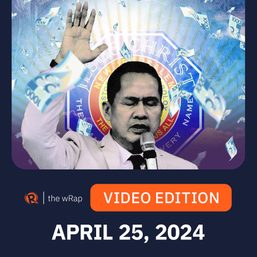

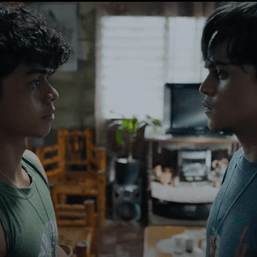
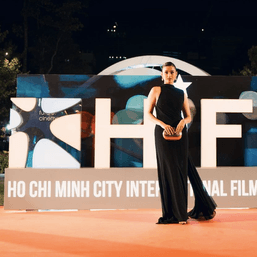
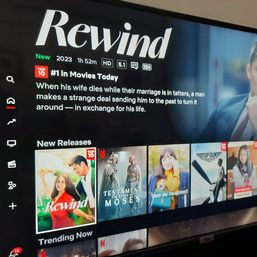
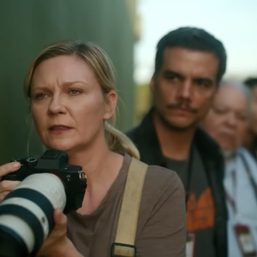
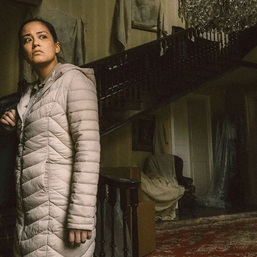
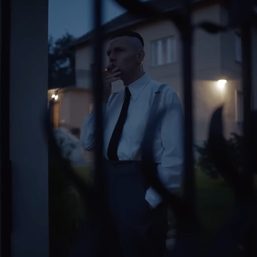

There are no comments yet. Add your comment to start the conversation.